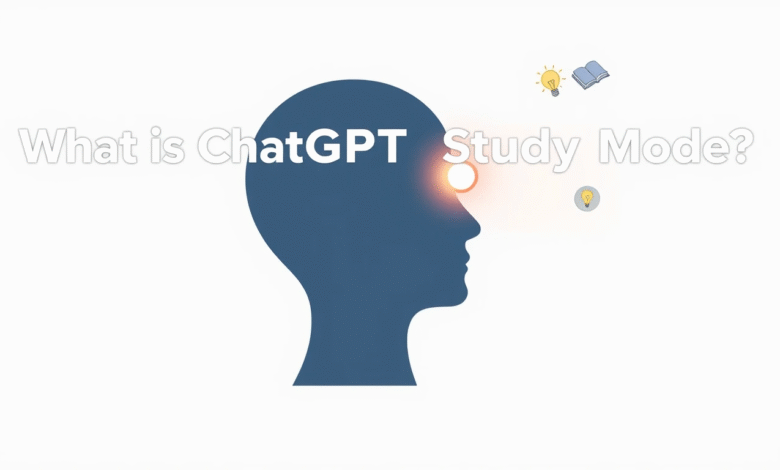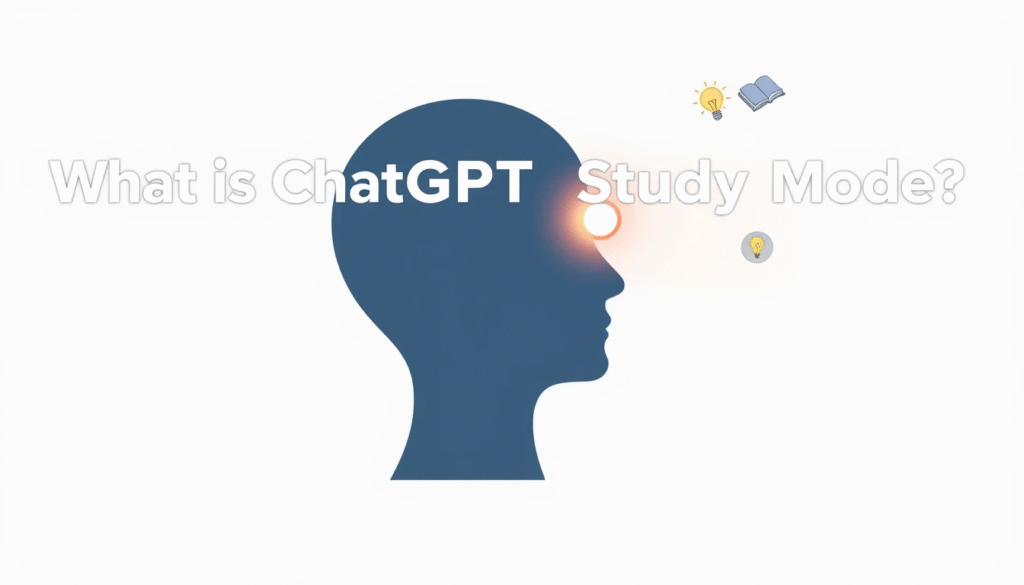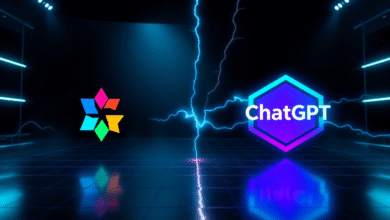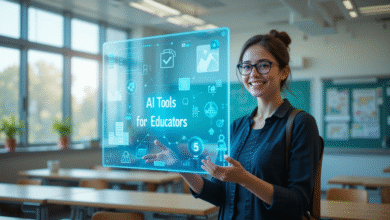
In the world of education, a new phrase is buzzing among students and teachers: ChatGPT Study Mode. While it’s not an official, built-in feature you can toggle on or off, it represents a revolutionary method for using ChatGPT to transform your learning process. It’s about moving beyond simple questions and answers and turning the powerful AI into a personalized, interactive, and highly effective academic partner. If you’ve ever felt overwhelmed by coursework, this is the strategic approach you need to know about.

But what does it actually mean to put ChatGPT in “study mode”? It means using a specific set of prompts, techniques, and workflows to make the AI work for you in a structured, academic way. It’s the difference between asking “What is photosynthesis?” and commanding it to “Act as my biology tutor and create a quiz on the key stages of photosynthesis.” Mastering the unofficial ChatGPT Study Mode is about unlocking its full potential to help you understand complex topics, prepare for exams, and write better assignments ethically and effectively.
This guide will break down exactly what ChatGPT Study Mode is and explore seven powerful ways it can become your ultimate AI study partner.
1. It Acts as a 24/7 Personalized Tutor
The single greatest benefit of ChatGPT Study Mode is its ability to provide one-on-one, personalized tutoring anytime, anywhere. Unlike a human tutor with limited hours, ChatGPT is always available to explain difficult concepts. The key is to prompt it correctly to move beyond generic definitions and provide true instructional value.
Instead of just asking a question, you give it a role. For example:
“Act as a friendly physics professor. I’m struggling to understand Newton’s Third Law of Motion. Can you explain it to me using a simple, real-world analogy involving a skateboard?”
This technique immediately puts the AI into a teaching mindset. It will break down the concept in a way that is easy to grasp, using the exact analogy you requested. This personalized approach is the core of what makes ChatGPT Study Mode so effective for deep learning.
2. It Becomes an Interactive Quiz and Test Generator
Passive reading is one of the least effective ways to study. To truly remember information, you need to practice active recall. This is where ChatGPT Study Mode shines. You can command it to create unlimited practice tests, quizzes, and flashcards on any subject, tailored to your specific needs.

After reading a chapter in your history textbook, you could prompt:
“I’ve just finished reading about the causes of World War I. Create a 10-question multiple-choice quiz based on this topic. After I answer, provide the correct answers with a brief explanation for each.”
This turns a passive reading session into an active learning experience. It helps you identify knowledge gaps instantly, making your study sessions far more productive. This is a powerful feature when you use ChatGPT for studying.
3. It Functions as a Sophisticated Writing Assistant
Struggling with an essay or a research paper? ChatGPT Study Mode involves using the AI not as an author, but as a sophisticated writing assistant to help you brainstorm, outline, and refine your own work. It helps you overcome writer’s block and organize your thoughts logically.
For example, if you need to write an essay on The Great Gatsby, you could prompt:
“I need to write an essay arguing that the American Dream is portrayed as an illusion in The Great Gatsby. Create a 5-point outline for this essay, including a thesis statement and key evidence from the book to support each point.”
This gives you a strong structural foundation to build upon. You can then use the AI to help you rephrase awkward sentences or find stronger vocabulary, all while ensuring the final writing is 100% yours. Using the ChatGPT student plan in this way is an ethical strategy for improving your writing skills.
4. It Becomes a Powerful Research Summarizer
Academic research often involves reading dense, lengthy articles and papers. ChatGPT Study Mode allows you to dramatically speed up this process by having the AI summarize complex texts for you. You can copy and paste long passages or even ask it to explain the core findings of a well-known research paper.
The Rising Trend of ChatGPT in Education
A great prompt for this would be:
“Summarize the main arguments and conclusions of the Stanford marshmallow experiment in five simple bullet points. Explain the concept of ‘delayed gratification’ as if you were talking to a 15-year-old.”
This saves you hours of reading time and helps you quickly extract the most important information from any source. This makes it one of the best ChatGPT prompts for students looking to be more efficient.
5. It Acts as a Language and Translation Tutor
Learning a new language? ChatGPT Study Mode is like having a native speaker to practice with 24/7. You can use it for conversation practice, grammar correction, and vocabulary building. It can instantly correct your mistakes and explain the rules behind them.
For instance, a student learning Spanish could have a full conversation:
“Let’s have a conversation in Spanish. I am a beginner. Please correct my grammar and suggest more natural phrasing as we talk. Start by asking me what I did today.”
This interactive dialogue is far more engaging than just memorizing vocabulary lists. It helps build fluency and confidence in a way that traditional methods often can’t, making ChatGPT Study Mode an invaluable tool for language learners.
6. It Helps You Set Up a Structured Study Plan
Feeling overwhelmed and not sure where to start studying for a big exam? You can use ChatGPT Study Mode to create a detailed, organized study schedule. By providing it with your subjects, exam dates, and available time, it can generate a logical and manageable plan.
Here’s a sample prompt:
“I have final exams in Biology, History, and Algebra in three weeks. I can study for 2 hours every weekday and 4 hours on weekends. Create a weekly study schedule for me that allocates time for each subject, including revision days.”
This takes the guesswork out of planning and ensures you cover all your material in a balanced way. It acts as an academic planner, helping you stay organized and on track. This planning capability is a cornerstone of the unofficial ChatGPT student plan.
7. It Becomes a Debate Partner for Critical Thinking
To truly master a topic, you need to understand it from multiple angles. ChatGPT Study Mode can be used to challenge your own assumptions and strengthen your arguments by acting as a debate partner.

You can set up a debate with a prompt like this:
“Let’s have a debate. I will argue that nuclear energy is the best solution for climate change. You take the opposing view and challenge my arguments with strong counter-points and evidence.”
This forces you to think critically, anticipate counter-arguments, and defend your position with logic and facts. It’s an advanced technique that moves beyond simple information retrieval and helps you develop the higher-order thinking skills that are essential for academic success.
Conclusion
While ChatGPT Study Mode isn’t an official button you can press, it is a powerful mindset and methodology for transforming your academic life. By leveraging ChatGPT as a personalized tutor, a quiz generator, a writing assistant, and a critical thinking partner, you can learn more deeply, manage your time more effectively, and approach your assignments with confidence. The key is to always stay in the driver’s seat—using this incredible AI study partner to enhance your own intelligence, not to replace it. Master these techniques, and you’ll be well on your way to achieving your academic goals.
Frequently Asked Questions
Is ChatGPT Study Mode a real feature?
No, it’s not an official feature. It’s a term used to describe a specific method of using ChatGPT with strategic prompts and workflows to create a powerful, personalized learning experience.
How can ChatGPT help me prepare for an exam?
You can use it to create practice quizzes and tests on any topic. This “active recall” method is one of the most effective ways to identify knowledge gaps and strengthen your memory.
What is the best way to ask ChatGPT to explain something?
Give it a role, like “act as a history professor.” Then, ask it to explain the concept using a simple analogy or as if you were a specific age to get a more tailored response.
Can I use ChatGPT to help me write an essay?
Yes, but you should use it as a writing assistant, not an author. It’s great for brainstorming ideas, creating an outline, and improving your own draft, but never copy and paste its work.
Does using ChatGPT for studying improve critical thinking?
It can if used correctly. Engage the AI in a debate by asking it to challenge your arguments. This forces you to think more deeply and defend your position with evidence.
Is there a special ChatGPT student plan?
While there isn’t an official “student plan,” the free version of ChatGPT is incredibly powerful for most study needs. The paid Plus version offers access to newer models like GPT-4.
How do I make a study schedule with ChatGPT?
Tell it your subjects, exam dates, and how much time you have available to study each day. It will then generate a structured, easy-to-follow weekly schedule for you.
Can ChatGPT help me learn a new language?
Absolutely. You can practice having conversations with it in your target language. It will correct your grammar and suggest more natural phrasing, acting as a 24/7 language partner.




